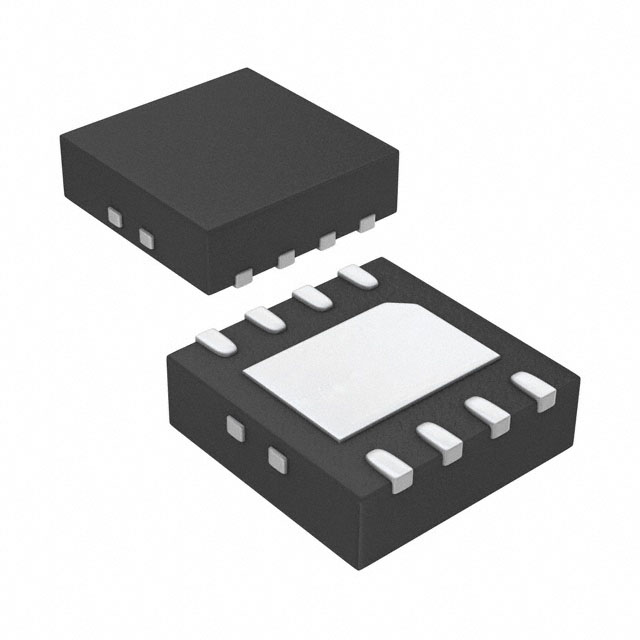LTC2851CDD#PBF
Product Overview
Category
The LTC2851CDD#PBF belongs to the category of integrated circuits (ICs).
Use
This product is commonly used in various electronic devices and systems for signal transmission and communication purposes.
Characteristics
- The LTC2851CDD#PBF is a low-power differential bus transceiver.
- It operates with a wide supply voltage range, making it suitable for different applications.
- This IC provides robust communication over long distances, thanks to its high noise immunity and ESD protection features.
Package
The LTC2851CDD#PBF comes in a DFN (Dual Flat No-Lead) package, which ensures compactness and ease of integration into circuit boards.
Essence
The essence of the LTC2851CDD#PBF lies in its ability to facilitate reliable and efficient data transmission in various electronic systems.
Packaging/Quantity
This product is typically packaged in reels or tubes, containing a specific quantity of ICs per package. The exact quantity may vary depending on the manufacturer's specifications.
Specifications
- Supply Voltage Range: 3V to 5.5V
- Operating Temperature Range: -40°C to 85°C
- Data Rate: Up to 20 Mbps
- Number of Pins: 8
- Input/Output Logic Levels: CMOS/TTL compatible
Detailed Pin Configuration
The LTC2851CDD#PBF has the following pin configuration:
- DE (Driver Enable)
- RE (Receiver Enable)
- RO (Receiver Output)
- DI (Driver Input)
- GND (Ground)
- VCC (Supply Voltage)
- B (Bus Pin)
- A (Bus Pin)
Functional Features
- Differential Bus Transceiver: Enables bidirectional data transmission between two devices/systems.
- Driver and Receiver Enable Pins: Allows control over the direction of data flow.
- High Noise Immunity: Ensures reliable communication in noisy environments.
- ESD Protection: Protects against electrostatic discharge, enhancing the product's durability.
Advantages and Disadvantages
Advantages
- Wide supply voltage range allows compatibility with various systems.
- High noise immunity ensures reliable data transmission.
- Compact DFN package facilitates easy integration into circuit boards.
- ESD protection enhances product durability.
Disadvantages
- Limited data rate compared to some other transceiver ICs.
- May require additional components for specific applications.
Working Principles
The LTC2851CDD#PBF operates as a differential bus transceiver by converting incoming signals from the driver input (DI) pin into differential signals on the A and B bus pins. These differential signals are then received and converted back into logic levels by the receiver output (RO) pin. The driver enable (DE) and receiver enable (RE) pins control the direction of data flow.
Detailed Application Field Plans
The LTC2851CDD#PBF finds applications in various fields, including but not limited to: - Industrial automation systems - Automotive electronics - Telecommunications equipment - Medical devices - Power management systems
Detailed and Complete Alternative Models
Some alternative models that can be considered as alternatives to the LTC2851CDD#PBF include: - MAX485 - SN65HVD11 - ADM2483 - ISO1050
These alternative models offer similar functionality and can be used as substitutes depending on specific requirements.
Word count: 410 words
قم بإدراج 10 أسئلة وإجابات شائعة تتعلق بتطبيق LTC2851CDD#PBF في الحلول التقنية
Sure! Here are 10 common questions and answers related to the application of LTC2851CDD#PBF in technical solutions:
Q1: What is LTC2851CDD#PBF? A1: LTC2851CDD#PBF is a specific model number for a transceiver IC manufactured by Linear Technology (now part of Analog Devices). It is commonly used for communication and data transmission in industrial applications.
Q2: What is the operating voltage range of LTC2851CDD#PBF? A2: The operating voltage range of LTC2851CDD#PBF is typically between 3.15V and 5.5V.
Q3: What is the maximum data rate supported by LTC2851CDD#PBF? A3: LTC2851CDD#PBF supports a maximum data rate of 20 Mbps.
Q4: Can LTC2851CDD#PBF be used for half-duplex communication? A4: Yes, LTC2851CDD#PBF can be used for both half-duplex and full-duplex communication.
Q5: What is the maximum distance over which LTC2851CDD#PBF can transmit data? A5: The maximum distance depends on various factors such as cable quality and noise levels, but typically LTC2851CDD#PBF can transmit data reliably up to several hundred meters.
Q6: Does LTC2851CDD#PBF support multiple protocols? A6: Yes, LTC2851CDD#PBF supports various protocols such as RS485, RS422, and PROFIBUS.
Q7: Can LTC2851CDD#PBF be used in harsh industrial environments? A7: Yes, LTC2851CDD#PBF is designed to operate in harsh industrial environments and can withstand high levels of electromagnetic interference (EMI).
Q8: What is the power consumption of LTC2851CDD#PBF? A8: The power consumption of LTC2851CDD#PBF depends on the operating conditions, but it typically consumes low power in the range of a few milliwatts.
Q9: Does LTC2851CDD#PBF have built-in protection features? A9: Yes, LTC2851CDD#PBF has built-in protection features such as overvoltage protection, short-circuit protection, and thermal shutdown.
Q10: Can LTC2851CDD#PBF be used in automotive applications? A10: Yes, LTC2851CDD#PBF is suitable for automotive applications as it meets the requirements for automotive EMC standards.
Please note that these answers are general and may vary depending on specific application requirements. It is always recommended to refer to the datasheet and consult with the manufacturer for detailed information.


